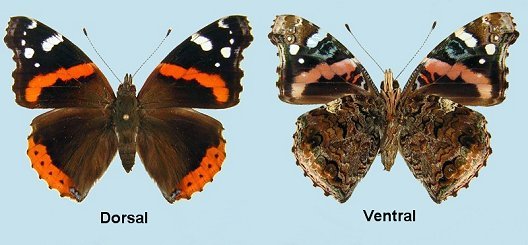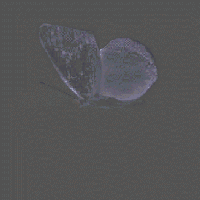Visual Communication

 Many insects communicate with visual signals. The color patterns and other markings on the wings of butterflies and moths facilitate species recognition in much the same way colored uniforms reveal the players’ affiliations on a football field. Some insects use bright colors, eyespots, or other distinctive patterns to scare away predators, to advertise their ability to sting, or to mimic the appearance of another unpalatable species. Other insects use dance-like body movements to attract a mate or to communicate with nestmates. Most of these signals are effective only as long as they are visible in daylight. But a few insects (fireflies, for example) can generate their own light and use visual signals that can be seen at night.
Many insects communicate with visual signals. The color patterns and other markings on the wings of butterflies and moths facilitate species recognition in much the same way colored uniforms reveal the players’ affiliations on a football field. Some insects use bright colors, eyespots, or other distinctive patterns to scare away predators, to advertise their ability to sting, or to mimic the appearance of another unpalatable species. Other insects use dance-like body movements to attract a mate or to communicate with nestmates. Most of these signals are effective only as long as they are visible in daylight. But a few insects (fireflies, for example) can generate their own light and use visual signals that can be seen at night.



 Ultraviolet reflection from a male
Ultraviolet reflection from a male